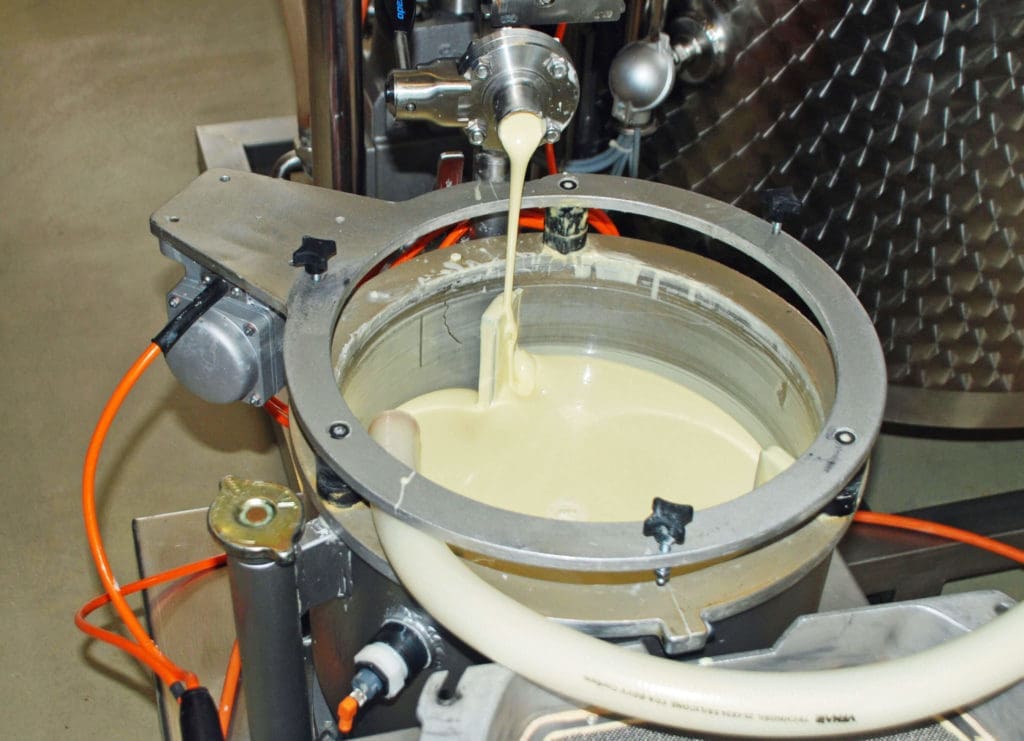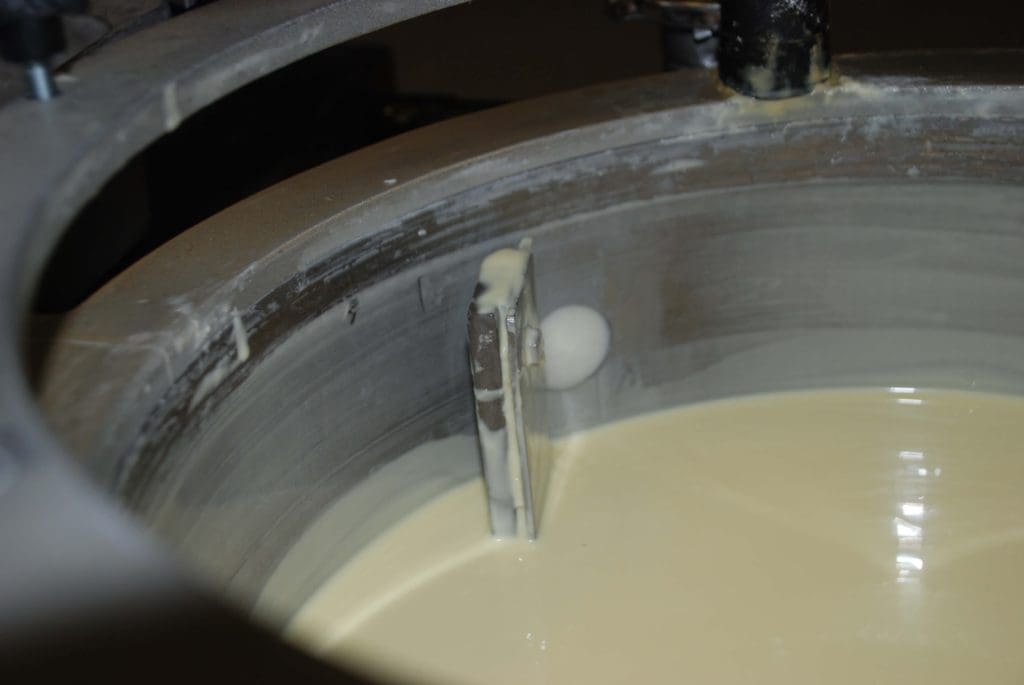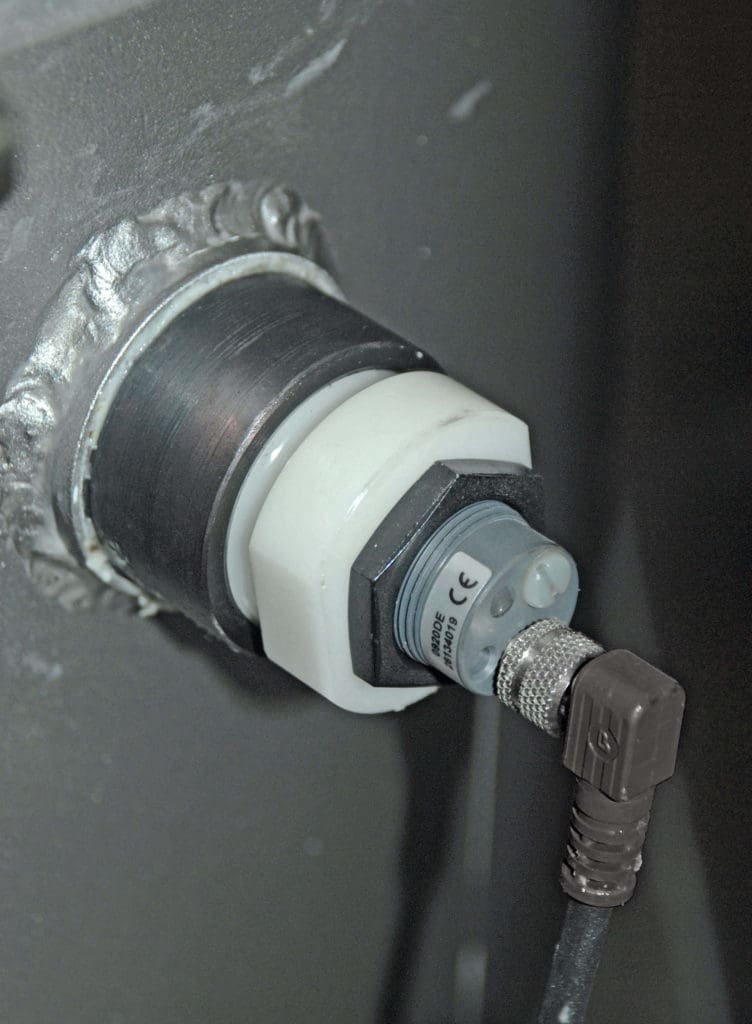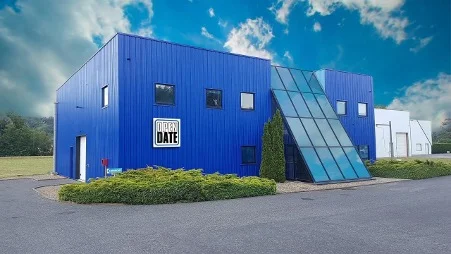Capacitive sensors are a fine thing in and of themselves: They can detect levels of liquids, powders and granular materials through non-metallic container walls without the sensor coming into contact with the media. However, conventional capacitive sensors also have a number of disadvantages.
The sensitivity of the sensor must be adjusted in a time-consuming process so that the signal is triggered not by the container itself, but by the container wall together with the medium. And if you ever try to accurately detect the level of chocolate, ketchup, etc. using a conventional capacitive sensor, you will discover that these media do not drain without leaving residue, and deposits regularly lead to sensing errors, which make error-free measurement impossible.


This challenge was faced also by Gysi, the renowned chocolate manufacturer in Switzerland, when seeking to equip the agitators of various tempering machines for heat treatment of chocolate when retrofitting new sensors for level regulation. The previous level detection system based on measuring the pressure difference was getting up in years and repeatedly had to be checked and cleaned at regular intervals, which incurred considerable effort and downtime. Therefore Gysi looked for a new solution.
First attempts with a built-in sensor from the machine manufacturer, however, did not look promising because the application could not be left unattended. Then a Balluff sensor with smart level technology was chosen finding an error free solution.

Smart level sensors operate at an oscillator frequency significantly higher than conventional capacitive sensors. In addition, the patented electronic processor unit gathers more information than is usually the case with capacitive level measurement. It evaluates not only the capacitance, but also the conductivity value of the medium.
Since compact media have high, thin films of the same medium, but only low conductivity values, the new sensors have no trouble distinguishing between thin deposits and the real level. This means that sensing errors with media that do not drain without leaving residue, such as chocolate, are largely prevented.

Gysi now has 6 machines retrofitted with the new sensors and there are already plans to retrofit additional systems. The sensor in the container wall detects the level of the chocolate directly through the end face of the plastic sleeve in the container wall. If the chocolate falls below a certain fill level, the sensor triggers and after 30 seconds liquid chocolate is refilled until the optimum fill level is reached.
Unlike conventional capacitive sensors, these fill-level indicators do not have to be readjusted, neither during operation, nor when changing the recipe. Thus the switch point between white and dark chocolate, for example, differs by only three millimetres.





